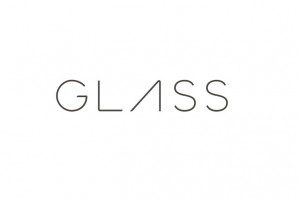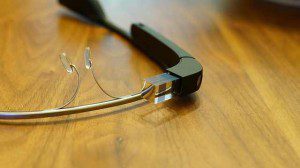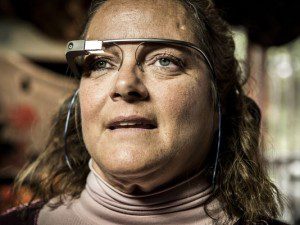Jane Hawking BBC Interview about The Theory of Everything

The Theory of Everything
Released on 1st January The Theory of Everything has become a sensation, winning both the Best Actor and Best Original Score awards at the Golden Globes and the interest around the film is just growing and growing. Back on January 3rd Jane Hawking appeared on BBC Radio 4’s Woman’s Hour discussing her life with Stephen, the time she spent as a carer, the aftermath of her marriage and even her thoughts on the film.
In previous posts since the film’s launch we’ve discussed the technical side of things, how Professor Hawking actually talks but here we’re looking at the more personal side of their lives, which has become critically acclaimed in cinemas around the country.
Life on a Precipice
In an interesting interview which gave Jane the chance to discuss her life with Stephen and her feelings about having her autobiography, Travelling to Infinity: The True Story Behind the Theory of Everything turned into a hugely important and hugely popular film.
Talking about the film Jane expressed how strange and mesmerising it was to see Felicity Jones playing her and even remarked how Stephen too was amazed by how fantastically Eddie Redmayne came across playing him, with some stills of the two next to each other almost identical.
The interview also delves more deeply into the life Jane had trying to cope with Stephen’s Motor Neuron Disease with very little knowledge of what the disease could do and a prognosis of two to three years before his final death. In reality things panned out very differently and Jane herself highlights how she wished she had asked more when she had the chance so she would have been able to ask for help, get the right provisions in place and start with the support needed from the beginning, with a better system in place for vetting the medical and health professionals who came into their lives.
Jane described her life, when things were deteriorating, as ‘on a precipice’ not knowing what would happen next or how they’d cope with it but it wasn’t without hope, and her strength of character comes through, despite the issues they faced as a family.
Moving Forward

Jane Hawking’s Autobiography
Both Stephen and Jane Hawking entered new relationships after theirs was over and Jane highlights how the film portrays her relationship with Jonathan Jones very well, showing respect for all parties involved and she talks eloquently about how they managed their feelings to ensure no one was initially hurt. The mentions of Stephen’s second wife Elaine are fleeting and it’s clear, Jane and Stephen have been able to maintain a more effective family relationship since his divorce from Elaine.
Their family connections ensure they are always tied together and this has allowed their relationship to remain strong even after all the tribulations, although it is now better described as a working or platonic relationship than what they had before.
The type surrounding the Hawking family at the moment is fascinating and gives us a closer look at one of the leading figures in modern physics and the more personal side of his life. Hearing things from Jane’s point of view is especially valuable as it gives another dimension to the story as a whole and lets us see how well the film has portrayed her autobiography in her opinion.
Transcript:
[Intro]
Interviewer: But first, in 1963 two young undergraduates bumped into each other at a Cambridge party.
[Film Clip: 00:00:08 – 00:00:56]
[Start]
Stephen: Hello.
Jane: Hello
Stephen: Science.
Jane: Arts.
Stephen: English.
Jane: French and Spanish. What about you? What do you?
Stephen: Cosmologist, I am a cosmologist.
Jane: What’s that?
Stephen: It’s a kind of religion for intelligent Atheists
Jane: Intelligent atheists?
Stephen: You are not religious are you?
Jane: C of E. Church of England.
Stephen: England. I suppose someone has to be.
Jane: What do cosmologists worship them?
Stephen: What do we worship?
Jane: Mhm.
Stephen: One single unifying equation that explains everything in the universe.
Jane: Really?
Stephen: Yes.
Jane: What’s the equation?
Stephen: That is the question. And a very good question. [Laugh] I am not quite sure yet, but I intend to find out.
[End]
Interviewer: Well that was Eddie Redmayne and Felicity Jones imagining the first meeting of Stephen Hawking and Jane Wilde in the new film, The Theory of Everything. It tells a story of how Jane went on to marry the brilliant young astrophysicist knowing that he had motor neurone disease and had been given only three years to live. Together Professor Stephen Hawking and his wife Jane confound all possible expectations as the years turned into decades. And they had three children together before separating in 1990. Both went on to remarry. Stephen to Elaine Mason from who he has since divorced and Jane to a long standing friend Jonathan Hellyer Jones.
Well the film is a fascinating glimpse into their lives before and after the diagnosis and it’s based on Jane’s Autobiography Travelling to Infinity. Jane Hawking told me what it was like seeing her life on screen.
Jane: Felicity’s performance was phenomenal. She came to dinner several times when they were filming in Cambridge and I got to know her quite well, but she studied me obviously while we were talking and we talked a lot. And, when I saw her on the screen I was flabbergasted because she captured my mannerisms, my movements, my patterns of speech. Even—
Interviewer: I know when I see a snap shot of Eddie Redmayne and Felicity Jones in the wedding when you got married and an actual black and white shot of you and Stephen you almost do a double take don’t you?
Jane: Yes. Stephen says that he’s seen photos of himself as young man and Eddie side by side and he has difficulty knowing which is which.
Interviewer: And the decision to get married which was in 1965 when you were both very young seems to have been an extraordinary thing to do of your life because at that point he’d had his diagnosis of motor neurone disease and you knew that a battle lay ahead. But, you thought it was going to be quite a short battle didn’t you?
Jane: When Stephen’s father told me that Stephen had two or three more years to live at most and I felt I could devote myself to him for those two or three years. I loved him, I wanted to marry him and I wanted to do my best for him to give him every opportunity. Also though I have to tell people that we were living under the Nuclear Cloud and it only took what would take only one spark to ignite a conflagration or a Nuclear war which was going to be the end of civilisation; the end of all of us.
Interviewer: You also gave up a lot when you got married which again wasn’t unusual for women of your generation, you know, you were educated, you studied languages, you hoped for a career in the diplomatic service. You then dedicated your life to your husband and family. But, do you feel like you gave up more than other women, other friends?
Jane: Well to look at it from one perspective I think ours was the last generation for whom a home and a family were the great aims in life. On the other hand my father insisted that I finish my degree in London. So, I did finish my first degree and then I looked around for what could I do and I realised very quickly that being a wife and a mother in Cambridge was a passport to nowhere. There was no respect for wives and mothers in the academic–
Interviewer: Did you resent that?
Jane: I thought I needed to do something about it. So I started work on a Ph.D. on medieval Spanish poetry which was a lovely thing to do but it was quite difficult to manage first of all Stephen and a Ph.D. it wasn’t so difficult because we were both working together, but then when the children came along when I was looking after or playing with the children I felt I should be doing my Ph.D. and when I was doing my Ph.D. I thought I should be looking after or playing with the children. So there was a constant tension there and because of all the other things I had to do looking after Stephen of course, looking over the household. It took me a very, very long time to finish it. I finished it actually just before Tim, my youngest son, was born.
Interviewer: I mean you talk of the years of child care but you also talk of the “Stephen Care”. Now as a carer you sacrifice your own needs much of the time and it was endless caring. Did that take its toll? You described how you became a drudge in the book.
Jane: Eventually. At first we were trying to be a normal family living a normal life. I was very young. I had bags of energy and I managed, I coped. Stephen did have help from his friends and colleagues I mustn’t forget them because when he went to the department of applied math’s during the day they looked after him there and they brought him home for lunch and they brought him home in the evening. It was really after fame and fortune took hold that I began to find things very difficult. I was not as strong as I used to be. I was very tired; in fact eventually I was just worn out.
Interviewer: Because there were a lot of occasions where someone had to be with Stephen 24 hours. You’d sit up all night and you would do shifts wouldn’t you because you were worried about him?
Jane: My darling mum came over from St. Albans and she would sit up with Stephen all night when I was exhausted and then one of his very special students Bernard Carr also came and helped out in the same way. Stephen hated being in hospital he didn’t want to go into hospital and when he had to go into hospital he wanted to get out as quickly as he could. And we didn’t have a nursing team at home in those days and it meant that the family had to look after him at night with his dreadful, dreadful choking fits which was so, so scary.
Interviewer: So you were living on a knife edge weren’t you between life and death?
Jane: I described it as living on a precipice; the edge of a precipice. But, even so I said in the book that if you live on a precipice long enough you actually begin to put down roots and then a little tree grows up on the edge of the precipice.
Interviewer: It sounds like Stephen is a sort of non-confrontational person because you never discussed his illness it was like a “no go” area wasn’t it?
Jane: He would not talk about it. And I think that probably was my mistake because if when we were very young I’d insisted on talking about it, it might have been rather easier later.
Interviewer: But going back to your relationship, your platonic relationship with this lovely widower Jonathan who comes into your life having cared for his terminally ill wife. And in fact slots in really well and he is quite happy to do all the caring duties for Stephen as well and in fact–
Jane: He takes over and he helps with duties that when I was too exhausted to do myself.
Interviewer: How did you manage with loving a man who you refused to have an affair with? In the film it comes across a profound sense of duty both of you.
Jane: I felt I was committed to Stephen and Jonathan was committed as he says in the film not just to me but to the family as well. He was very lonely have been widowed so recently and he was not ready to have an affair. He was looking for some fulfilment in his life.
Interviewer: Now your relationship with Stephen ended unhappily when he had a relationship with one of his nurses, Elaine Mason who he eventually married and has since now divorced. What was that period in your life like Jane? Did you feel utter betrayal?
Jane: No, because I realised that Jonathan was in my life and I felt that Stephen had every right to have somebody in his life. But, I did want us to be able to continue as a family and I felt that Stephen needed me in his life because I knew all the routines. I cared for him. I was committed to him. I felt that he needed my protection, but evidently that is not what he and his nurse wanted. So that was actually the end of the marriage.
Interviewer: Has your relationship resolved since then?
Jane: Between Stephen and me?
Interviewer: Yes.
Jane: Oh well we have three children and we have three grandchildren and I think that it’s very important for the family to have a sense of unity and to be able to do things together. To be able to go on holiday together, to be able to have meals on festive occasions together. And, to enjoy things like The Theory of Everything together.
Interviewer: What was it like as the years kept passing by and not to put too fine of a point on it, Stephen was still alive?
Jane: Life goes on doesn’t it? One year succeeds another and you concentrate on all the really wonderful things: your children, their success, the grandchildren and their success. And, in a sense Stephen and I had won the battle against motor neurone disease and that was a great success to.
Interviewer: Would he ever have achieved what he did without you?
Jane: Now that I cannot answer. Other people have suggested that, that might be the case, but who knows what could have happened.
Interviewer: One point in the film Stephen says to you “you don’t know what’s coming.” If you had known would you have made the same decision to get married?
Jane: I think if I had known I then would have known that I would be wanting to do things differently. I would want to be able to talk about the illness with him. I would want to be able to make better provisions. I would want to be much more careful about vetting people who came into the house as nurses and carers. So I would have wanted to have been in a strong position myself and I would have definitely wanted a lot more help.
[Outro]
Interviewer: I was talking to Jane Hawking and that film The Theory of Everything opened yesterday and it is very, very good indeed.






